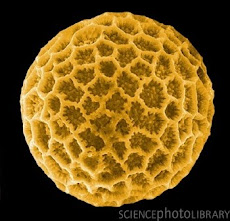Um projecto muito interessante sobre palinologia de 2007:
AIM
The aim of the Palynology Group (WG-2) on the UNESCO-sponsored IGCP-521 program is to reconstruct changes in vegetation patterns and fire regimes in the Mediterranean-Black Sea-Caspian Sea Corridor over the past 30,000 years (30,000 yr B.P.).
BACKGROUND
The Mediterranean-Black Sea-Caspian Corridor is a complex region, where the influence of changes in climate is modulated by changes in the extent of the Black and Caspian Sea, and by human exploitation. A relatively high density of sites is required to document changes in vegetation cover in sufficient detail to be able to separate these different influences. There have been many new studies carried out in this region since the BIOME 6000 compilation was completed. WG-2 of the IGCP-521 project will synthesise the data from the region. By combining this synthesis with the existing BIOME 6000 database, and with data being collected in the context of BIOME 6000 daughter projects such as PAINand CiMBIO, we should achieve a good coverage of this key region.METHODOLOGY
The WG-2 is compiling pollen, plant macrofossil and charcoal data from sites in the region between 28-48°N and 22-62°E. An inventory of sites has been established for each data type. The data are initially entered into workbooks. Information about how to complete the workbooks is given in the accompanying User Guide.
Databases have been created for each data type and data base compilation is being carried out in Bristol. These data will be used to reconstruct changes in vegetation patterns and fire regimes. Workshops are planned to explore the use of biomisation techniques for vegetation reconstruction, and to compare the reconstructions with model-based simulations of changes in vegetation and fire regimes since the Last Glacial Maximum.
INTERNATIONAL SYNERGIES
WG-2 will collaborate with PAIN, CiMBIO and the Eurasian Macrofossil Working Group to create mutually-compatible data syntheses for the northern extratropics. It will capitalise on the database of charcoal records being created as part of the IGBP Fire Fast Track Initiative. In addition to existing simulations from the Palaeoclimate Modelling Intercomparison Project (PMIP, PMIP2), palaeoclimate simulations will be provided by QUEST Theme 2 projects ( PalaeoQUMP, QUEST-Deglaciation) and from the NERC Joint Rapid ORMEN project. Simulations with the LPJ-SPITFIRE coupled vegetation-fire model will be run as part of the EU-funded GREENCYCLES and FIRE-PARADOX projects.
Mais informações disponíveis em:











Nenhum comentário:
Postar um comentário